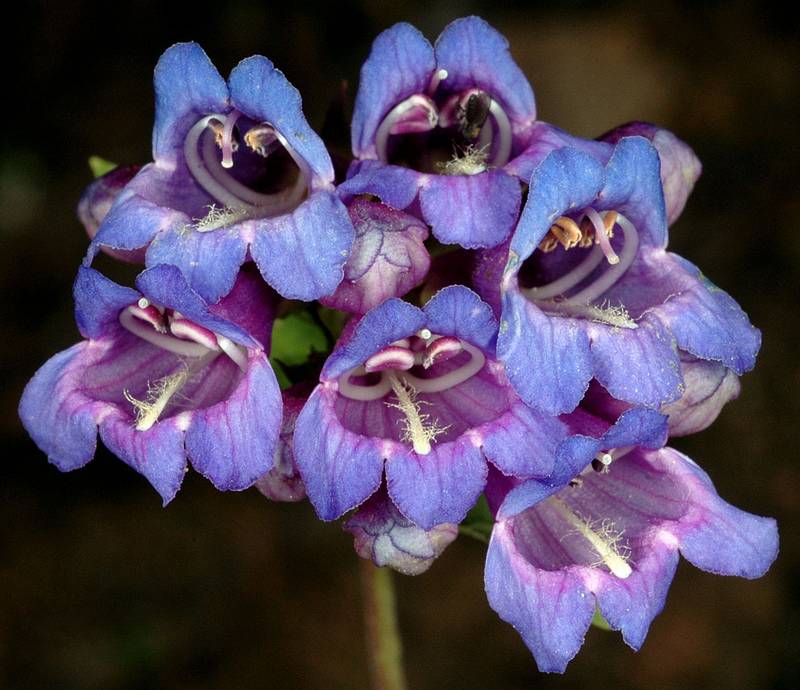Penstemon cardwellii
Penstemon serrulatus
Cardwell's beardtongue
Cascade beardtongue, coast penstemon
Leaves opposite, glabrous, the largest on short, sterile shoots, serrulate or nearly entire, short-petiolate, the blades elliptic, 1.5-3.5 cm. long and 6-14 mm. wide;
leaves of the flowering shoots less crowded, smaller, sessile and entire.
Leaves opposite, glabrous, all cauline, the lower ones reduced and short-petiolate, the others sessile, lanceolate to ovate-oblong, sharply serrate, 3-8 cm. long and 1-3.5 cm. wide.
Inflorescence racemose, few-flowered and crowded, glandular, the simple pedicels opposite and axillary;
calyx 5-12 mm. long, the 5 segments thin and lanceolate;
corolla bright purple to deep blue-violet, 30-38 mm. long, about 1 cm. wide at the mouth, keeled on the back, glabrous outside and with long, white hairs near the base of the lower lip within;
anthers long-wooly, pollen sacs opposite;
staminode slender, shorter than the 4 fertile filaments, long-bearded toward the tip
Inflorescence often a single, compact, terminal verticillaster, sometimes of several and more open;
calyx 5-9 mm. long, the 5 segments with marginal hairs;
corolla deep blue to dark purple, 17-25 mm. long, glabrous inside and out;
anthers permanently horseshoe-shaped, 1.1-1.6 mm. long;
pollen sacs dehiscent only on their confluent apices; fertile filaments glabrous;
staminode with a long, yellowish beard on the upper half, the tip flattened.
Capsule
Capsule 5-8 mm. long.



